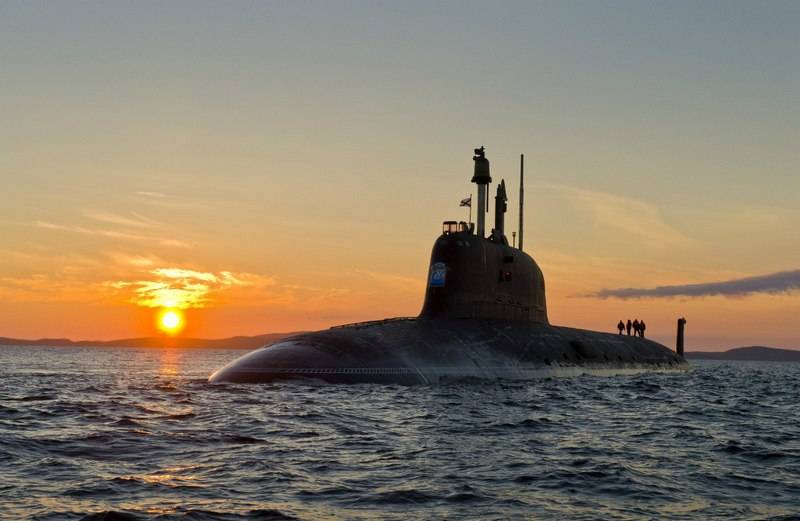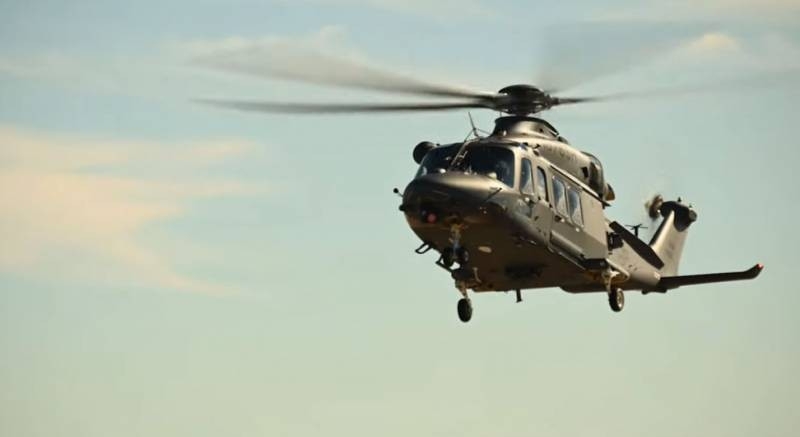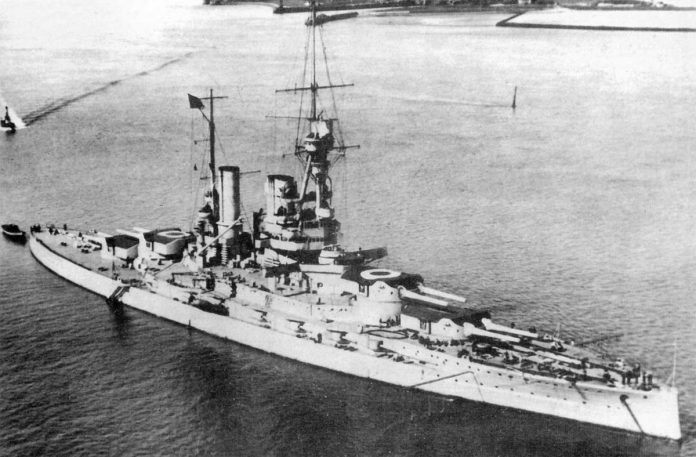
Having studied the design features in the previous article battleships of the "Rivenge" class, we move on to the brainchildren of the "gloomy Teutonic genius", the heights of German battleship building during the First World War, called "Bayern" and "Baden".
The history of these ships began in the autumn-winter months. 1910 city, when the question of increasing the caliber of the guns of the "capital" ships of the Kaiserlichmarine was again put on the agenda. But first - a little background.
As is known, the first German dreadnoughts of the "Nassau" type received 280-mm guns, at that time were the standard main caliber of heavy German ships: the last two series of Kaiserlichmarine battleships, Braunschweig and Deutschland, had four 280-mm guns with a barrel length 40 calibres. Of course, battleships of the "Nassau" type received an improved and more powerful 45-caliber artillery system, but still it was not considered sufficient for the battleships of the future.
And so, already the next four German dreadnoughts, ships of the "Helgoland" type, received a much more powerful 305 mm / 50 Krupp gun, which became one of the best in the world (a, perhaps, and the best) artillery system of this caliber, a real work of artillery art, which left far behind the British 305-mm / 45 and 305-mm / 50 guns. of course, from goodness not looking for good, so the next series, Kaiser battleships, the Germans armed with the same 305 mm / 50 artillery system.
And then burst out 1909 year, marked by the laying of the world's first superdreadnought - the British Orion, and it became clear, what further "Lady of the Seas" will build ships with 343-mm artillery. Surprisingly, but the news of this did not cause any stir in Germany: despite, that their next series of ships of the line, laid down in 1911 g. (type "Koenig"), intended to fight the British superdreadnoughts, they kept the same 305 mm / 50 guns, that they were on the "Kaisers". And the "Kenigi" themselves were structurally very similar to the battleships of the previous series., excluding the location of the main artillery.
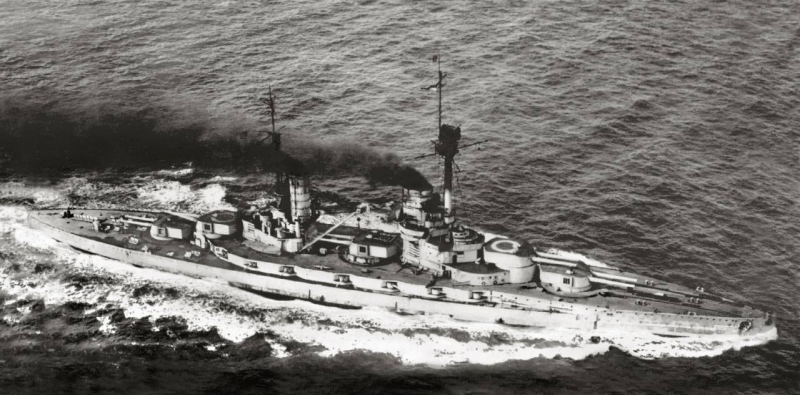 Linkor «Kyenig»
Linkor «Kyenig»
The logic of the Germans was quite clear: Yes, British 343-mm guns are more powerful, but the German 305 mm are lighter, and this made it possible to create an easier, or better protected tower (more precisely - both at the same time), which required a smaller diameter barbet, which again made it possible to improve its protection or save weight, the same applied to feed mechanisms, boekomplekta… Generally, Germans counted, that due to the well-known lightening of the main caliber, they can create much better protected ships, what are the British building, and what's the best armor, better flatness of the projectile flight path, higher rate of fire will give the Kenigam an advantage in combat with 343mm superdreadnoughts, despite, that the latter have more powerful guns.
How German designers and admirals were right in their reasoning? We will answer this question some other time, when we take up a detailed analysis of the English "Orions" and "Iron Dukes" and the German "Kaisers" and "Kenigov", but this is beyond the scope of our today's article. Now it is important for us to know, what the Germans thought so, and not that, were their views correct.
so here, designing "Kenigi", the Germans believed, that ten 305-mm / 50 guns fully meet the tasks of a modern battleship. But soon the USA and Japan followed the example of the British., switched to even larger 356 mm guns, and it became clear, that the armament of the battleships of the High Seas Fleet must be strengthened. But how? The German Armaments Department of the Imperial Naval Ministry considered two options. One of them was, to increase the number of 305 mm / 50 guns to 13-15 meals. on a battleship - obviously, this entailed the transition from two-gun turret installations to three-gun, or even more.
The second option involved the preservation of the two-gun turrets while increasing the caliber of the guns to 340 mm. Having made the necessary calculations, In November 1910 g. German experts came to the conclusion, that 340mm cannons in twin turrets have a preference. However, the results of the calculations did not at all encourage the Germans to immediately create a 340-mm artillery system.. In fact, the result of calculations of the Department of Armaments was the realization of the need for more powerful naval artillery than the existing 305-mm, but a promising caliber for future battleships still had to be determined. Therefore, the project of the 340-mm two-gun turret, proactively developed and presented in July 1911 g. concern Krupp, aroused only polite interest from the Ministry of the Navy.
The process of determining the optimal caliber of promising German battleships was slow and very detailed.. State Secretary (naval minister) A. von Tirpitz asked a perfectly reasonable question: more recently, 280-305-mm cannons suited everyone, Now the newest ships are equipped with 343-356-mm artillery systems, but where will the finish line in this caliber race? That he will be somewhere, had no doubt: this, eventually, there will be technical, and economic constraints. Background Tirpitz saw, that the size and power of dreadnoughts is growing from year to year, but he understood well, that this growth is finite: sooner or later battleships will reach their maximum size for the existing technological level, exceeding which it will no longer make sense, since the increase in combat capabilities will no longer compensate for the outrunning growth in the cost of ships.
In other words, von Tirpitz assumed, that sooner or later the same will happen to dreadnoughts, as with squadron battleships, and that their size and firepower are stabilized at some level. but in 1911 city, obviously, it hasn't happened yet, however that, who will set the limit boundaries of battleships before the rest, will be able to start building them earlier, and thus will benefit, while other countries create weaker ships.
Von Tirpitz ordered some calculations, as technical, and tactical, and was soon convinced, that the limiting caliber of guns is stabilized somewhere in the area 16 inches (400-406 mm). In this his assumptions were confirmed by the consultants of the firm "Krupp", who claimed, that the British, adhering to the old methods of making artillery systems (wire barrels), cannot create heavier naval guns.
It would seem, here it is - the solution to the question, all clear, and you need to build battleships with sixteen-inch artillery, but von Tirpitz hesitated. The thing is, that he had to take into account both inside- and foreign policy factors, and everything was complicated here.
Information about how, that any countries are designing guns 15-16 inches, was not yet, and battleships for 16-inch guns promised to be huge and expensive. Will the Reichstag accept such an increase in value, considering, that no one else in the world builds such battleships? Will the creation by Germany of "16-inch" ships provoke another round of the naval arms race?? But, on the other hand, if only to "catch up" for other powers in the caliber of artillery, whether Germany will not lag behind at sea? Von Tirpitz did not have answers to these questions., and he 4 August 1911 g. gave instructions to three departments of the Maritime Ministry: shipbuilding, general and the Department of Armaments to carry out comparative studies of the transition of the main ships of the fleet to 350-mm, 38-mm and 400-mm guns.
And so, 1 September, an expanded meeting was held on the choice of the caliber of future guns. Interesting fact - the 380-mm cannons were discarded immediately., but about the other two, a heated debate unfolded. Ten 350 mm guns or eight 400 mm? Interesting, that the gunners and the head of the weapons department, Rear Admiral G. Gerdes, spoke in favor of 10 * 350-mm guns, which should have been placed on the battleship in five two-gun towers similar to the "Koenig". Their arguments boiled down to, that the 400mm gun, of course, better penetrates armor, but not so much, to have an overwhelming advantage over the 350 mm cannons, their rate of fire is comparable, a 10 trunks will be able to "bring in the enemy" more shells, than 8.
Surprisingly, they were opposed by shipbuilders - chief designer of the fleet G. Buerkner stated, which is a staunch supporter of the four-tower ship, weapons which are grouped in the bow and stern, leaving the middle part of the body unoccupied for cars, boilers, boats and mine artillery. He declared, that the fifth tower "always gets in the way", and what of her, possibly, should get rid of. Besides, he drew attention, that 10 * 350mm guns will have more weight, than 8 * 400mm, and what savings can be up to 700 tonnes.
See, that the discussion is deadlocked, A. von Tirpitz proposed a compromise solution - to use 10 * 350-mm guns, placing them at the ends in two- and three-gun towers so, so that the 1st and 4th towers are three-gun, and the 2nd and 3rd - two-gun, that is, like that, how the Americans subsequently installed 10 * 356-mm guns on the battleships Oklahoma and Nevada, laid about a year later than the described events. But this compromise satisfied no one, because the rejection of the three-gun towers in the Imperial Naval Ministry bordered on a phobia. The main arguments against such towers are listed below..
1. The large diameter of the barbets led to the need to cut "huge holes" in the decks of the ship - according to German shipbuilders, this violated the optimal distribution of the longitudinal structural connections of the hull and negatively affected its strength. Need to say, the argument is completely contrived - and then, and later many ships with three-gun turrets were built, whose hull strength was quite satisfactory.
2. Reducing the rate of supply of ammunition to the medium gun. Actually, if such a problem existed, then it could be, if not solved at all, then reduce to a completely insignificant value.
3. The increase in the torque of the turntable of the tower when fired, since the axes of the outer guns were further from the center of the installation, than in a two-gun turret. Need to say, what, although this objection is absolutely correct, it, with reasonable tower design, did not lead to any complications.
4. Large loss of firepower when withdrawing a three-gun turret in battle. A very controversial argument. Yes, of course, three guns one and a half times more, than two, but the fact is, that the chances of getting into one of the five towers are much higher, than one of four.
At the same time, the specialists of the Maritime Ministry were fully aware of, that three-gun turrets also have advantages - more compact placement of artillery, allowing to reduce the length of the citadel and save weight on it, and in addition, the ability to provide artillery with the best angles of fire. But still, notwithstanding the above, and to, what German naval gunners and engineers knew about the introduction of three-gun turrets in the Russian fleets, Italy and Austria-Hungary, their prejudice against such towers remained undefeated.
Though…
The author of this article has a certain, not even that, to guess, a, rather, direction, which requires further research. As is known, Austria-Hungary managed to build four very interesting and powerful battleships of the "Viribus Unitis" class, combining in a relatively small displacement an acceptable speed, very strong artillery weapons and impressive armor. However, about the battleships themselves (as, properly, and the vast majority of Austro-Hungarian ships) very little is known, the bibliography about them is very, very scarce. If you look at the tabular performance characteristics, it turns out, that the Habsburg empire succeeded almost the world's best 305-mm dreadnoughts (at the time of bookmarking, of course). But the history of naval construction shows, that such "super ships" usually suffer from many non-obvious disadvantages, and their tabular values remain only on paper.
At the same time, dear S. Vinogradov in his monograph "Superdreadnoughts of the Second Reich" Bayern "and" Baden ". The main caliber of Admiral Tirpitz "notes, what at the time of discussion 1 September 1911 g. the Germans already had data on the Viribus Unitis and had the opportunity to get acquainted with the design of their three-gun installations. Apparently - at the level of drawings, since the battleships of this series entered service, but, perhaps, at 1911 g. the towers themselves were already finished in metal.
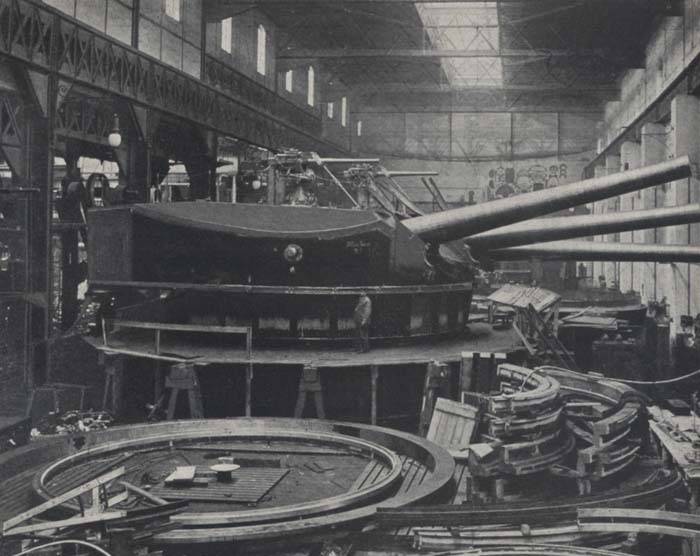 Three-gun turret of battleships of the "Viribus Unitis" class
Three-gun turret of battleships of the "Viribus Unitis" class
certainly, the Germans had a strong prejudice against the three-gun turrets, and it is not in doubt. But it's very hard to imagine, that German engineers, in favor of this point of view, deliberately distorted their conclusion about the towers of Austrian ships. Much easier to admit, that the design of the Austro-Hungarian dreadnoughts and their towers really had all of the above shortcomings and the Germans, having studied them properly, found a "brilliant" confirmation of their position. However, we repeat - this is just a personal assumption of the author, hypothesis, not confirmed by any documents.
Howbeit, compromise, proposed by A. von Tirpitz, did not satisfy either side. Then Rear Admiral G. Gerdes offered eight 350-mm guns, located in four towers linearly elevated at the ends of the ship, but such a weakening of armament was rejected by the State Secretary himself, considering it unpromising. As a result, the meeting chose a battleship with eight 400-mm guns for further study., but indicated in the resolution, that this decision will require an appropriate political assessment.
The meeting was held again three weeks later., and now its participants reacted to the 400-mm caliber much more "friendly", than 1 September. Much has been said about the prestige of Germany, about the opportunity to overtake competitors - in general, admirals and designers now noticeably leaned towards the 400-mm gun, and von Tirpitz began to prepare a report for the Kaiser.
There was not much time left - at the end of autumn, von Tirpitz was to receive an invitation to the annual autumn hunt, what actually happened. There, far from the troubles and bustle of Berlin, the secretary of state presented the Kaiser with a sketch of the battleship, from which, generally, and the design of Bayern began. Unfortunately, little is known about this project. The normal displacement of the battleship was 28 250 t, length - 177 m, armament - 8 * 400 mm, 14*150-mm and 10 * 88 mm guns. The project provided for the three-shaft power plant, which has become classic for German ships., moreover, the middle shaft had to work on diesel. And this, generally, was everything.
Kaiser liked the project, now it was necessary to draw up a preliminary estimate for the construction of the battleship. Despite the preference for, which von Tirpitz provided 400 mm caliber, ships with 350-mm and 380-mm guns were also taken into work. And the very first estimates showed, what preliminary draft, which showed to the Kaiser von Tirpitz, were too optimistic.
The battleship variant with 10 * 350-mm guns has acquired a normal displacement. 29 000 t and cost 59,7 million. stamps. Well, the battleship with 8 * 400-mm guns turned out to be even larger., despite the fact that his "price tag" is guaranteed to go for 60 million. stamps. These figures were too high for von Tirpitz, he did not consider it possible to convince politicians of the need to allocate such funds.
And then the draft design of the battleship with 8 * 380-mm guns arrived in time, worked out by the shipbuilding department: with a normal displacement of 28 100 t it should have cost an order 57,5 million. stamps. Such indicators A. von Tirpitz found it quite acceptable, the ship fit well into budgets. Of course, 400-mm the gun was more powerful, but von Tirpitz, forced to consider financial and political aspects, wrote to the Kaiser:
«Advantage, associated with a further increase in caliber, relatively small, and from here this weapon can probably be saved and then, when other fleets switch to an even heavier caliber».
In other words, there is every reason to assume, what, abandoning the 400mm gun, von Tirpitz reasoned something like this: now our battleships will still be the strongest, and then, even if some powers switch to 406-mm guns, then we, using a lighter 380 mm artillery system, we use the saved weight to enhance the booking of our ships. So our dreadnoughts, being weaker armed, they will become better protected at the same time and will remain quite equivalent to enemy ships of the same class with 16-inch artillery.
Actually, and no doubt, at this moment the Kaiser's fleet lost its ultimatum-powerful battleships, which, in terms of artillery power, would significantly surpass the British. In, that the 400 mm gun would be only slightly more powerful than the 380 mm, contained a fair amount of guile, although it is possible, that von Tirpitz was simply misinformed by the forecasts of experts. It's easy for us to reason today, with all the necessary background information at hand, but the most powerful weapon of the German navy at that time was the twelve-inch Krupp (305-mm), and the rest of the guns did not even exist in the form of some elaborate sketches.
but, if we compare the two guns of England, made at the same technological level - 381 mm and 406 mm, we will see, that the difference between them is quite tangible. As we said, 381-mm gun fired 871 kg shells with an initial velocity 752 m / sec, a 406-mm gun, which later received the battleships of the "Nelson", released 929 kg shells with an initial velocity 785 m / sec., that is, the muzzle energy of the 406-mm cannon was approximately 16,2% higher. It seems to be not so much, but if you forget, that the 381-mm cannon was deservedly considered a masterpiece of artillery, but the 406-mm artillery system is recognized by everyone as unsuccessful. In it, the British for some reason moved away from the principle of "heavy projectile - low initial velocity" to the principle of "light projectile - high initial velocity", but at the same time, for a number of reasons, this very speed could not be ensured - according to the project 929 kg the projectile was supposed to leave the barrel at a speed 828 m / sec ...
However, in the future, the artillery system was improved, bringing the initial speed to 797 m / sec., so that it became more powerful than the British fifteen-inch already by 19,8%. At the same time, the American 406-mm cannon, having 1000 kg projectile and muzzle velocity 790 m / sec, superior to the British 381-mm gun in muzzle energy by 26,7%.
In other words, there is no doubt, that at the same technological level, a 400-mm gun could be more powerful, than 380mm on 20-25%, and this is a very significant superiority. And the Germans stopped literally a step away from him - another thousand, or one and a half thousand tons of displacement, several million more marks and ... Alas, history does not know the subjunctive mood.
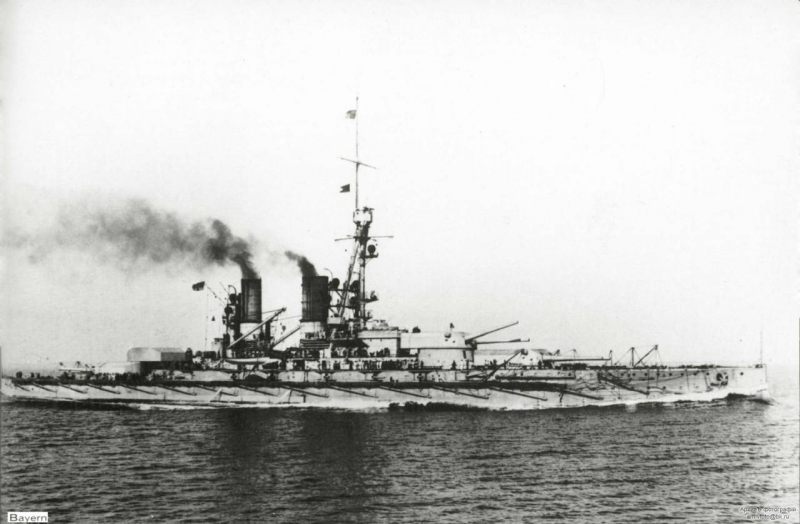 Linkor «Bayern»
Linkor «Bayern»
On the other hand, the rejection of the 400-mm gun can in no way be considered a sign of the inertia of the German naval leadership. The thing is, that at the time of the decision, the Germans knew only about, that ships with 343-356-mm artillery systems are being built in the world, and that the British seemed to be thinking about an even larger caliber cannon, but there was no exact data on the latter. And the Germans took a wide step forward, increasing the caliber of their guns by almost three inches in one fell swoop - a case in naval history is completely exceptional.
Suffice it to say, that the 380 mm two-gun turret weighed almost twice as much, than a similar turret with 305mm guns. In this way, the Germans not only decided on a revolutionary increase in the power of the guns of their dreadnoughts, but also took this step completely independently, influenced by their own views on the evolution of naval weapons, not because, that they were forced to catch up with someone. Information about, that the British create "381-mm" dreadnoughts, entered Germany about six months after the decision to build battleships with cannons of caliber 380 mm.
To be continued…








